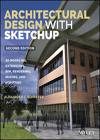Changing with the Times

Atlas Concorde’s large-format Calacatta Extra tile amplifies the natural light in the Manhattan office of law firm Kaye Scholer.
Photo © Garrett Rowland

Gensler installed more than 10,000 square feet of the porcelain flooring throughout the space, including in hallways, conference rooms, and food-service areas.
Photo © Garrett Rowland


To mark the centennial of its founding, law firm Kaye Scholer wanted to update its look. So the international company, known for its progressive values, hired Gensler’s New York branch to redo its Manhattan office. Bypassing the clichéd mahogany-panel walls and thick carpet-ing, the architects designed a light-filled space visually united by 10,000 square feet of Atlas Concorde’s Calacatta Extra porcelain tile.
The marble-look flooring’s durability and versatility were key. The chosen material needed to suit “high-end reception and conference spaces as well as seating and food-service areas,” says Gensler studio director Linda Jacobs. It also had to be able to be mud-set and thin-set, as both installation methods were required at the Midtown West site.
The tile’s oversize 95-by-48-inch format, combined with its pale surface, allowed the design team to open up the floor plan and brighten the space—all while staying within budget. “We installed the tile in an ashlar pattern in an open expanse near the windows, amplifying the natural light,” says Jacobs. Paired with the matte ceiling that spans from core to window wall, the surfaces combine to create a sense of airiness and calm.
Hands-on

The modular STACtile system, conceived and manufactured by London-based STAC Architecture, lends itself to innovative interior and exterior installations.

Offered in concrete, stone, and wood, the 25-millimeter-thick tiles can be shifted, rotated, and stacked.
Paul Thrush posits that to understand buildings, products, and materials, architects must be physically involved in their creation. Guided by this philosophy, the cofounder of London-based STAC Architecture developed STACtile, a modular system of concrete, stone, and wood cladding.
“It began with the concept of creating a modular tile that recalled the simplicity and playfulness of a child’s building block,” says Thrush. “I wanted each to embody pure geometries that, when grouped, would result in patterns that are both elegant and timeless.” The 200-by-50-millimeter tiles can be shifted, rotated, and stacked.
The firm molds the concrete tiles; it mills the granite, marble, sandstone, and wood designs on a CNC machine. All pieces are installed without grout, which allows the composition to flow uninterrupted. The concrete and stone versions are suitable for both indoor and outdoor use; the wood units are still being tested to determine their weather resistance.
The tiles are available on demand from STAC Architecture. They can also be made in customized sizes and colors. —LC





